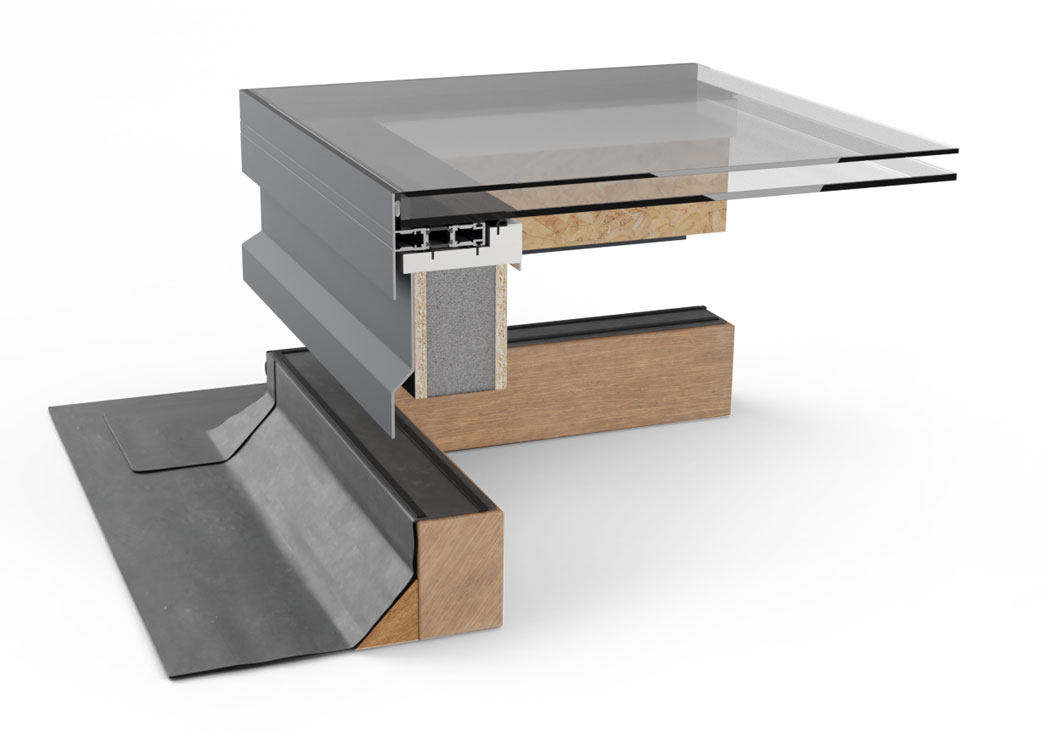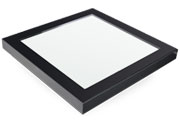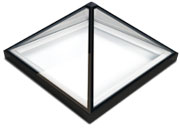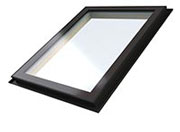Choosing Safe And Secure Glass For Your Rooflights
When it comes to installing rooflights in your home, safety is paramount. The perfect choice should be a blend of contemporary design, thermal efficiency, safety and security.
The glass used in manufacture is the best indicator for safety levels so it is essential that you choose the right kind of glass for your rooflight.
In order to ensure your utmost safety, the ideal specification should include a double glazed unit with an outer toughened pane and an inner panel of heat strengthened laminated glass.

In fact there are many reasons why a combination of both toughened and laminated glass is the preferable choice when it comes to rooflights. Let’s take a look at the pros and cons of each type of glass below.
Toughened
The variation in cooling rates creates compressive and tensile stresses. These counteracting stresses are what give toughened glass its higher resistance to breakage as well as the smaller shard fragments when it does shatter.
These small pieces may be less dangerous than larger ones, but they can still pose a problem, especially to those with young children or pets. The pieces are quite hard to find when sweeping up after a breakage and if they are consumed, they could cause serious issues to the digestive system.
Due to its resistant properties, toughened glass has a broad range of applications in architecture and vehicles, as well as furniture and public transport. However, it is not as secure as its laminated alternative, as the small fragments are very easily brushed away once the pane is smashed.
Whilst this makes toughened panes perfect for fire escapes and emergency exits on vehicles, it’s not ideal when it comes to securing a home. Without any dangerous shards left from breaking the glass, intruders are granted relatively easy access through a home window or sliding door that is fitted with toughened panes after they’ve been smashed.
Laminated
Laminated glass can offer increased protection and has mild sound proofing qualities, which is incredibly useful when it comes to spaces such as corporate meeting rooms.
Made from an interlayer of polymeric material sandwiched between two or more layers of glass, it is produced through two different methods.
The most common method is to use a combination of heat and pressure to push a thin layer of PVB between the sheets. Other polymers an also be added to give the window different properties. The other method creates what is known as Cast in Place laminated glass. This is made by pouring resin into the thin space between two panes that are held in place incredibly close to one another.
The interlayer, which helps hold the sheets together, greatly reduces the danger of sharp glass fragments, and increases the durability of the pane. It also provides a way to customise the glass and add colouring, sound dampening, ultraviolet filtering and fire resistance. Although the durability provides a heightened level of safety, it does mean that it cannot be used for fire escapes, as it will not break in an emergency.
Often used in secure buildings such as banks, and by the automotive industry for car windshields it’s also the perfect choice to secure a home; whether it’s used for the windows, doors or rooflights.
The EOS Glass Specification
All of our rooflights are manufactured using both laminated and toughened glass, which means that you benefit from the highest levels of safety and energy efficiency. For more information about how we can provide you with a safe and secure solution, contact EOS Rooflights today or take a look at our Fixed skylight, Electric Opening pages for more information and to see our stock sizes.

Other blogs you may like..
How to Choose the Right Skylights for Your Home
How to Choose the Right Skylights for Your Home Want to brighten up your home? Skylights could provide you with the ideal solution. In addition to bringing natural light into your home, skylights will help you to reduce your dependency on artificial lighting, enabling...
The Importance Of A five Degree Pitch
The Importance of a Five Degree Pitch With any flat roofing project, one of the main objectives is to prevent water pooling. After all, a flat roof is never truly flat. It must be designed to include a fall to allow water to be effectively removed from the roof. This...
Receiving Your Rooflight
Receiving Your RooflightThere are a number of factors to consider when handling a brand new rooflight. From the moment that it arrives, it is vital to treat it with the care that it deserves, and this involves applying some simple but essential rules. By following...
How Easily Can I Fit A Rooflight?
How Easily Can I Fit A Rooflight?So you’ve decided to install a rooflight in your home, but have you considered how to fit it? There are two options when it comes to fitting your rooflight: you can hire a contractor to install it for you, or roll up your sleeves and...
Choosing the Right Skylight
In 2013 we published a blog on how to choose the right skylight for your home. Due to its success we felt it would be valuable to revisit this subject to reflect recent trends and new products launches. In this update we will look at the options available to you when...
The Health Benefits of Natural Daylight
The Health Benefits of Natural DaylightAs soon as the nation enjoys a spate of pleasant weather, it is clear to see the positive impact that the sunshine has on our moods. With countless data supporting the advantages of natural daylight, we delve in and take a closer...
Contact our team
If you have any questions, would like a bespoke price or want to enquire about our installation service. Give us a call or drop an email:
![]() 0208 462 3557
0208 462 3557



